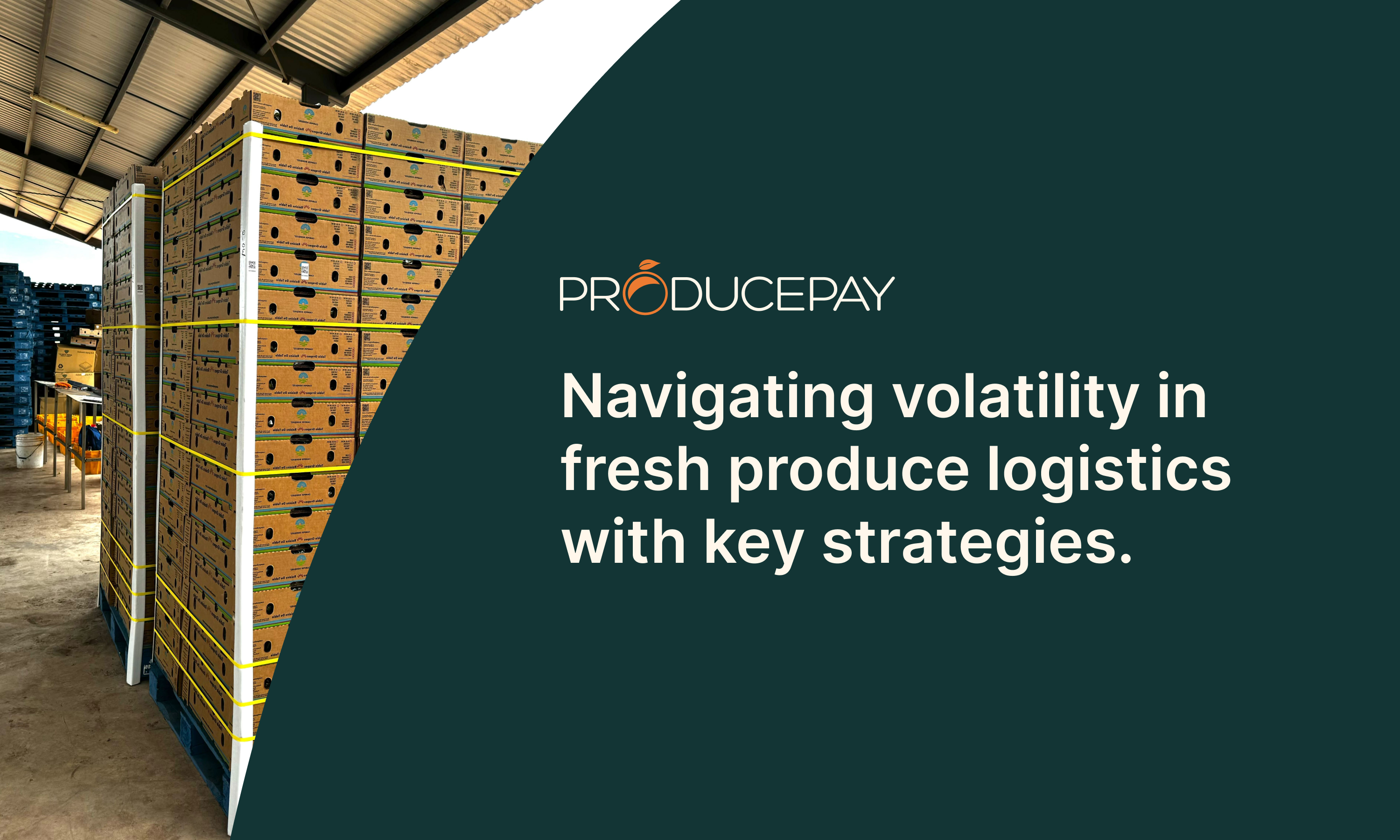
Navigating volatility in fresh produce logistics with key strategies
Transportation and logistics of fresh produce are key steps in the agricultural supply chain. Unlike other goods, perishable products require precise delivery times, specific storage conditions, and efficient coordination to ensure they arrive in optimal condition and minimize losses or rejections. Factors such as distance, infrastructure, seasonal demand, and regulations directly impact distribution efficiency and costs, making this area one of the most dynamic and challenging in fresh produce marketing.
Volatility creates significant challenges at this stage. Supply chain disruptions, extreme weather events, regulatory changes, geopolitical tensions, and economic instability continuously affect freight rates and capacity. In recent years, freight costs have strongly fluctuated due to increase in fuel prices, driver shortages, and seasonal demand spikes. In 2024, 60% of produce buyers considered freight and storage prices a major concern compared to the previous year.1
To address these challenges, produce marketers and retailers must adopt proactive strategies. Implementing best practices in planning, packaging, collaboration, technology, and infrastructure investments can maintain supply chain efficiency and control costs. Below are key strategies to address and minimize transportation uncertainties.
1. Ensuring effective planning
Supply chain inefficiencies result in up to 10% of produce being degraded, damaged, or wasted.1 This is why effective planning is crucial to minimizing disruptions in fresh produce logistics. Understanding factors such as distance, freight costs, and market demand ensure timely transportation and prevent bottlenecks caused by seasonal demand fluctuations and labor shortages.
Studies show that the further the distance between the produce source and the market, the greater the impact of fuel price increases on wholesale prices.2 Larger distances consume more fuel, making long-haul transportation vulnerable to cost spikes. While larger loads tend to be more cost-efficient, smaller shipments can drive up per-unit transportation costs, requiring careful volume planning.3 This makes route optimization essential, as higher transportation costs can significantly affect profitability.
Maintaining optimal shipping conditions, such as proper temperature and humidity, is essential for preventing spoilage. Frequent door openings in trailers or warehouses should be avoided to minimize fluctuations. Additionally, considering alternative routes or transport modes help react quickly to disruptions.
2. Using the right packaging
Proper packaging materials are critical in protecting fresh produce during transportation. Foam, paper inserts, and proper sealing techniques helps prevent impacts and maintain ideal humidity levels.3 Secure packaging not only prevents spoilage but also reduces overall transportation costs by minimizing losses and ensuring produce reaches retailers in marketable condition.
Correct palletizing and loading techniques must also be performed to prevent damage. Arranging the produce to maintain airflow can reduce premature spoilage and maintain quality.
3. Partnership and freight sharing
Collaborative transportation strategies can effectively reduce costs and optimize supply chain performance. Sharing shipping lanes and consolidating loads with industry partners helps prevent empty truck miles and improve financial efficiency and sustainability (by reducing carbon emissions).
Given that freight costs account for about 5% of the cost of goods sold in the food industry 4, and the notable fluctuations in recent years, establishing strategic partnerships with transportation providers can lead to significant savings, and ensure better reliability and availability, particularly during peak demand periods.
4. Technology implementation
The adoption of advanced logistics technologies enhances visibility, efficiency, and control over produce shipments. Real-time tracking systems and Transportation Management Systems (TMS) optimize routing and scheduling, reducing inefficiencies caused by delays and miscommunication. Predictive analytics improve scheduling accuracy by analyzing historical data, market trends, and customer behavior, allowing for more precise demand forecasting and inventory optimization.
Blockchain technology is another transformative tool that provides transparent and tamper-proof records of transactions and product movements, improving traceability, reducing fraud, and enhancing regulatory compliance.5 Additionally, more efficient cold storage technologies, such as solar-powered systems, helps maintain freshness longer and prevent quality degradation in a more sustainable way.
These digital solutions can reduce the risk of loss or damage, while addressing inefficiencies of manual processes that affect transportation capacity, making them key investments for enhancing operational efficiency.
Learn strategies for retailers to manage volatility in produce supply
5. Investing in proprietary logistics systems
For large-scale produce marketers and retailers, investing in proprietary logistics infrastructure can provide long-term cost stability and operational efficiency. Owning a dedicated fleet of refrigerated trucks or cold storage facilities provides greater control over transportation schedules, reduces dependency on third-party carriers, and minimizes markups from intermediaries.
Middlemen typically add markups at various stages of the supply chain, increasing costs for end consumers. By developing in-house logistics capabilities, companies can counteract these price increases, while maintaining better control over supply chain efficiency.
Enhancing produce supply logistics with ProducePay
In an industry where transportation volatility can lead to unexpected losses, compromise produce quality, increase rejection rates, and drive up costs, maintaining full visibility throughout the supply chain is essential. To mitigate these risks, produce marketers and retailers need real-time insights that enable proactive decision-making and reduce inefficiencies.
As part of our Predictable Commerce Programs, the Visibility solution provides monitoring and quality control at every stage of the supply chain. Through expert agronomist inspections during the growing and packaging processes, potential quality issues can be detected early, preventing non-spec produce from reaching buyers. Real-time order tracking offers data on key shipping details such as location, humidity, and temperature throughout transit. This data allows produce marketers to react swiftly to any deviations that might compromise quality, reducing spoilage risks and ensuring that shipments arrive in optimal condition.
By integrating ProducePay’s Visibility solution, businesses not only safeguard their supply chain against volatility but also enhance buyer confidence, significantly reducing rejection rates and securing long-term profitability in an unpredictable market.
Sources: 1. ProducePay’s Volatility Report, 2. USDA-ERS, 3. USA Refrigerated Freight, 4. FMI, 5. Falcony

